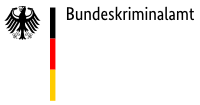- Short Overview
- What is DNA?
- What is examined?
- Significance of DNA analysis for law enforcement
- The DNA Analysis Database
- Mass Tests /Screenings

Short Overview
The aim of DNA analysis is the identification of a person who left evidence.
Through this, crimes can be solved, suspects identified and convicted, innocent people exonerated, potential victims protected from repeat offenders and links between crimes established. In the DNA analysis database all DNA profiles and the gender are stored. The individual evidence samples used for the examination are destroyed after the analysis is conducted. This means that in the future, no further information or other examinations can be made based on the data recorded in the DNA analysis database. Nowadays, using the database, almost every fourth trace can be matched to the person having caused it. The more than 69,831 matches achieved since the creation of the file have led to considerable investigative success, especially in the crime fields theft, robbery, extortion, sexual crimes and homicides.
What is DNA?
The construction plans of all living beings are recorded in a substance chemically called deoxyribonucleic acid (DNA).
The chemical substances adenine (A), guanine (G), cytosine (C) and thymine (T) provide the four letters with which all instructions are recorded. These are chained together in long sequences and form 'words' and 'sentences', so to speak. As in any text, there are also blank spaces where there is no information. In the DNA, these blanks are characterised by a sequence of letters that make no sense. According to current estimates, at most 5 % of the letter sequences of human DNA are meaningful (encoding), i.e. they contain a code for vital instructions. The other regions, however, which are described as non-coding, contain letter sequences which are characteristic for individual persons.
If these locations in the DNA are analysed (genetic marker system), the results can be taken down as a sequence of numbers. A marker consists of the term for the marker system and two numbers (e. g. VWA 15/17). The numbers reflect the number of repeat sequences of the base pairs. For the identification of a certain individual, several marker systems with corresponding numbers are required, which are then combined to form a DNA profile.
What is examined?
For police DNA analysis in Germany, only sequences from the non-coding regions are used in order to clearly identify a person. These do not allow for any conclusions regarding their characteristics, personalities or looks. The international standard for DNA analysis is defined by the use of the seven marker systems D21S11, TH01, VWA, FGA/FIBRA, D3S1358, D8S1179 and D18S51.
In Germany SE33 is analysed as an additional marker system. This results in an even higher national security in identification. By using the eight marker systems with their two numbers each, i.e. 16 figures, from a biostatistical point of view such an identification pattern is to be expected among the average Central European population only once in several hundred million persons. This is a proof for the reliability of DNA analysis as a means for identification.
Significance of DNA analysis for law enforcement
With the aid of DNA analysis, practically all human body cells (such as blood, muscular tissue, skin, bones, hair, sperm, saliva, sweat) can be genetically analysed.
The identification pattern determined in the analysis can be matched individually, i.e. to a certain person.
DNA analysis is therefore important physical evidence for the clarification of offences. Through this, crimes can be solved, suspects identified and convicted, innocent people exonerated and potential victims protected from repeat offenders.
In police investigations, DNA analysis never replaces further routine crime scene work or criminal investigations; but it supplements them effectively. DNA analysis is especially important where checking and matching DNA evidence to a possible offender, the victim or other uninvolved persons are concerned.
The DNA Analysis Database
After solving several sexual murders in 1997 and 1998 through the use of DNA analysis, the then Minister of the Interior, Mr Kanther, ordered the creation of a DNA analysis database at the Bundeskriminalamt in Wiesbaden on 17/04/1998.
Mass Tests /Screenings
In capital crime cases where the offender profile suggests the as yet unknown offender to be located in a certain area, as a last resort, what is known as mass screenings are conducted. Since the Act to amend forensic DNA analysis came into force, these mass tests for the clarification of certain crimes have been set upon a clear legal foundation (Art. 81 h Code of Code of Criminal Procedure). The DNA sample is given voluntarily. The identified DNA profiles are used only for comparison with a crime scene trace of the offender and are not checked against the DNA analysis database.
It is not possible to have one's DNA profile stored voluntarily - no matter if related to a specific case or not. The legal provisions do not allow for this voluntary storage of data in the DNA analysis database.
